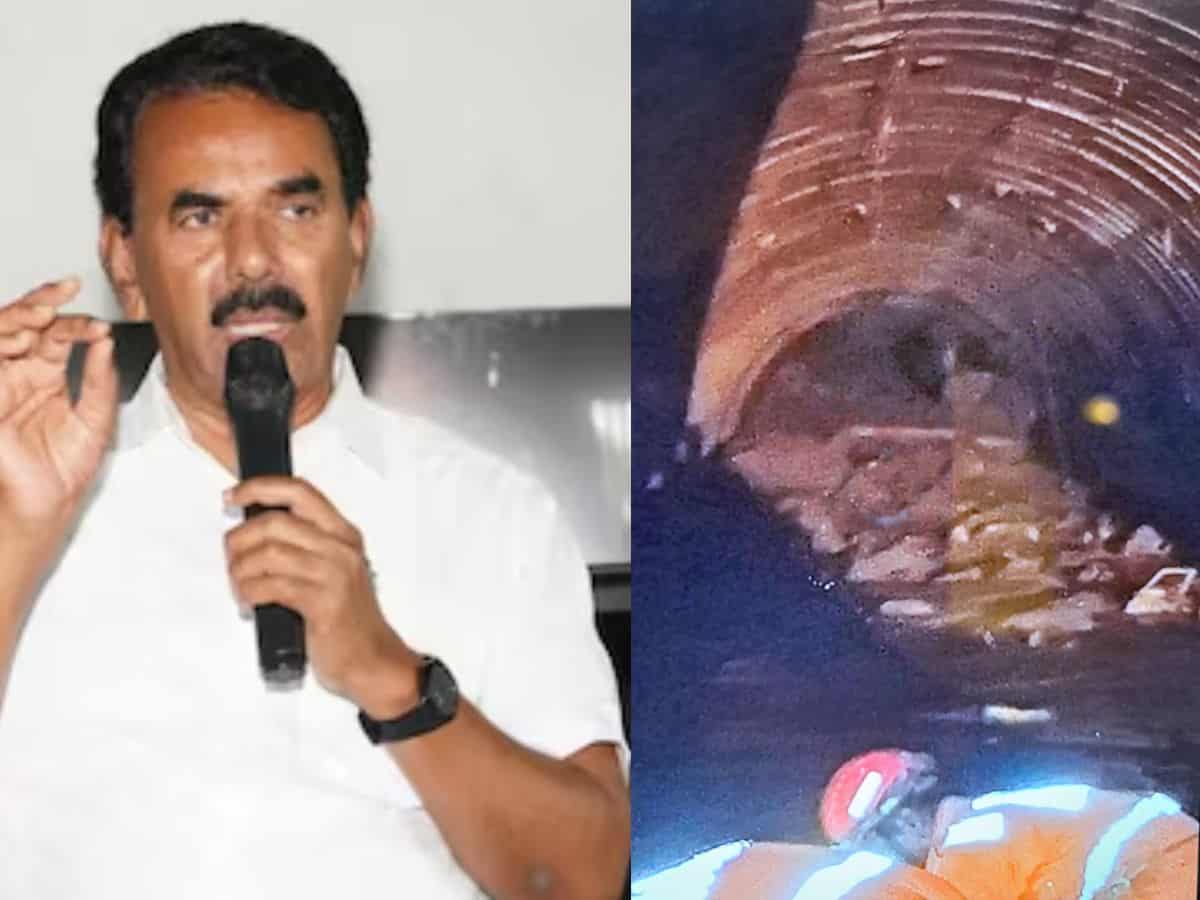
Hyderabad: Telangana tourism minister Jupally Krishna Rao, who went inside the SLBC tunnel (Nagarkurnool) as close as 100 metres to the area where part of it collapsed, said that the chances of survival of those who are stuck inside are not good keeping in mind the intensity of the happening.
“Given the intensity, it was lucky that 42 people could come out after they received a signal to leave immediately. Few people came out by swimming,” he told media after coming out of the tunnel in Telangana’s Nagarkurnool district.
Jupally said that there was no chance for a machine to enter the tunnel, and the clearing of the debris would have to be done manually in the 100-120 metre distance that needed to be cleared.
“Water is still coming into the tunnel, and if we put our leg, its going inside the slush. The boring machine was washed away almost 200 metre away. The heap of debris was almost 23 ft high, leaving just 3 metre open,” he told media persons.
He also said that the rescuers had called out the names of the workers possibly stuck in the debris, but no response came.
“We are not sparing any effort. There is no lethargy or lapse. We are hopeful, but the incident is very very serious,” he noted.
Achampet MLA Ch Vamsi Krishna who was also present at the SLBC tunnel, said that there were no indications of people being alive there, and if there were some air pockets inside, chances of survival could be there.
Meanwhile a photo released by the National Disaster Response Force (NDRF) personnel involved in the rescue operation sent a photo which showed the hand of a person emerging out buried under slush and metal. No further information was shared whether the person was rescued, if alive or not.
200 metre tunnel filled with debris
Sukhendu Dutta, deputy commandant of NDRF, said that the process of dewatering the tunnel was underway, and as soon as it ends rescue operation can begin.
He echoed the problem of debris being spread over 200-metre tunnel, and no response being received from the trapped workers even as the rescuers shouted out aloud, hoping for a reply.
Recalling Saturday night’s visit to the ground zero at around 10 pm, he said that the NDRF team used locomotive for 11 km and conveyor belt for 2 km to reach the spot where the workers were trapped, at 13.5 km distance inside the tunnel.
He said 11 to 13 km patch was filled with water, and the last 200-metre distance was filled with debris.



